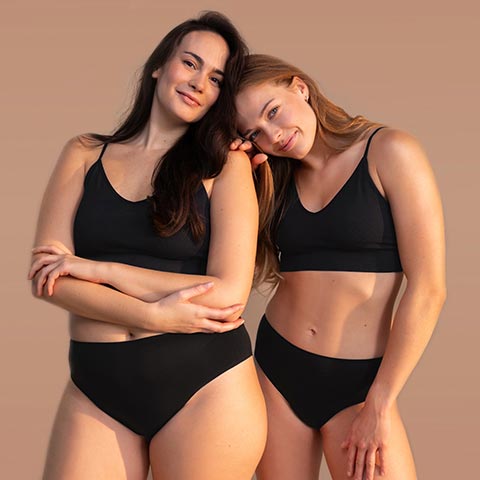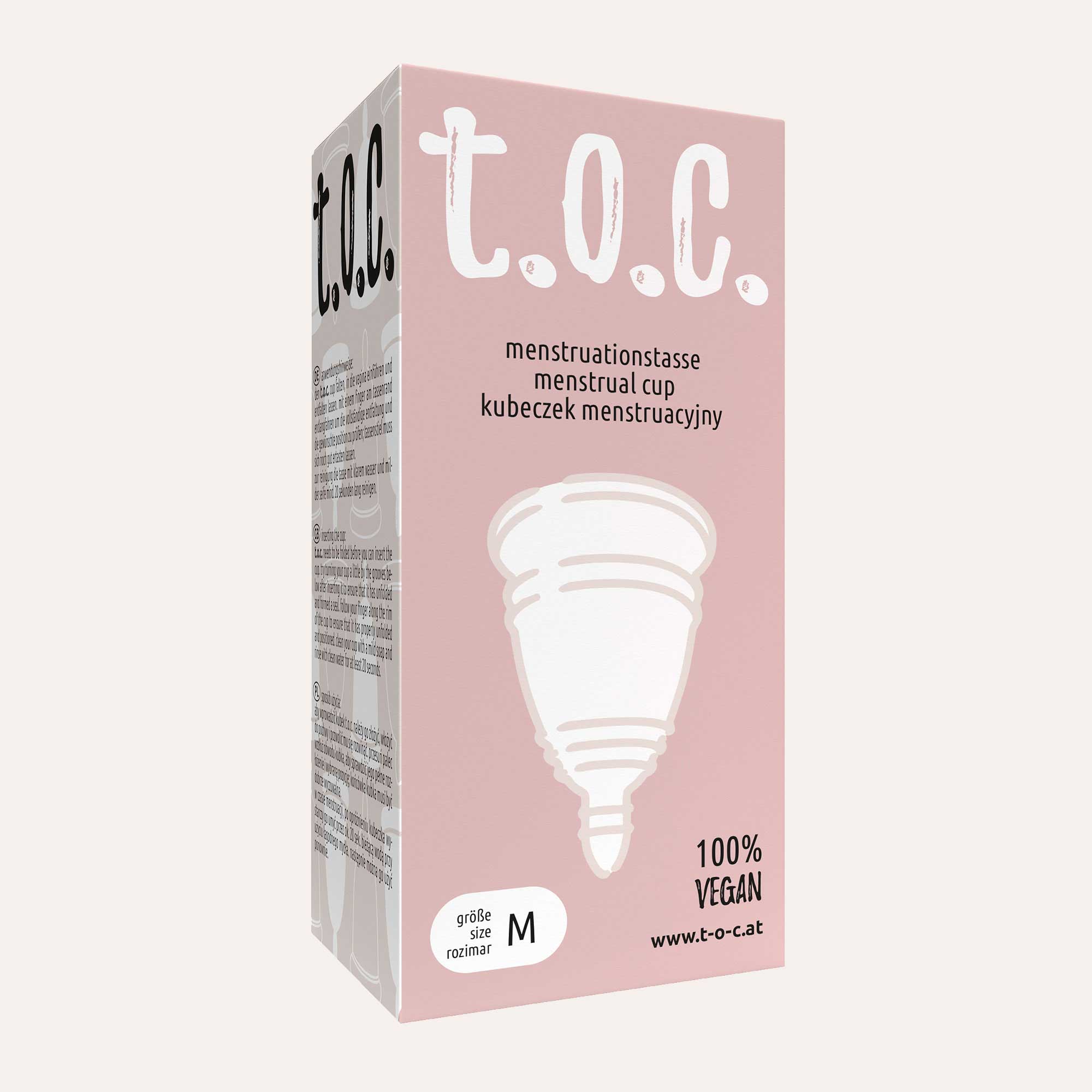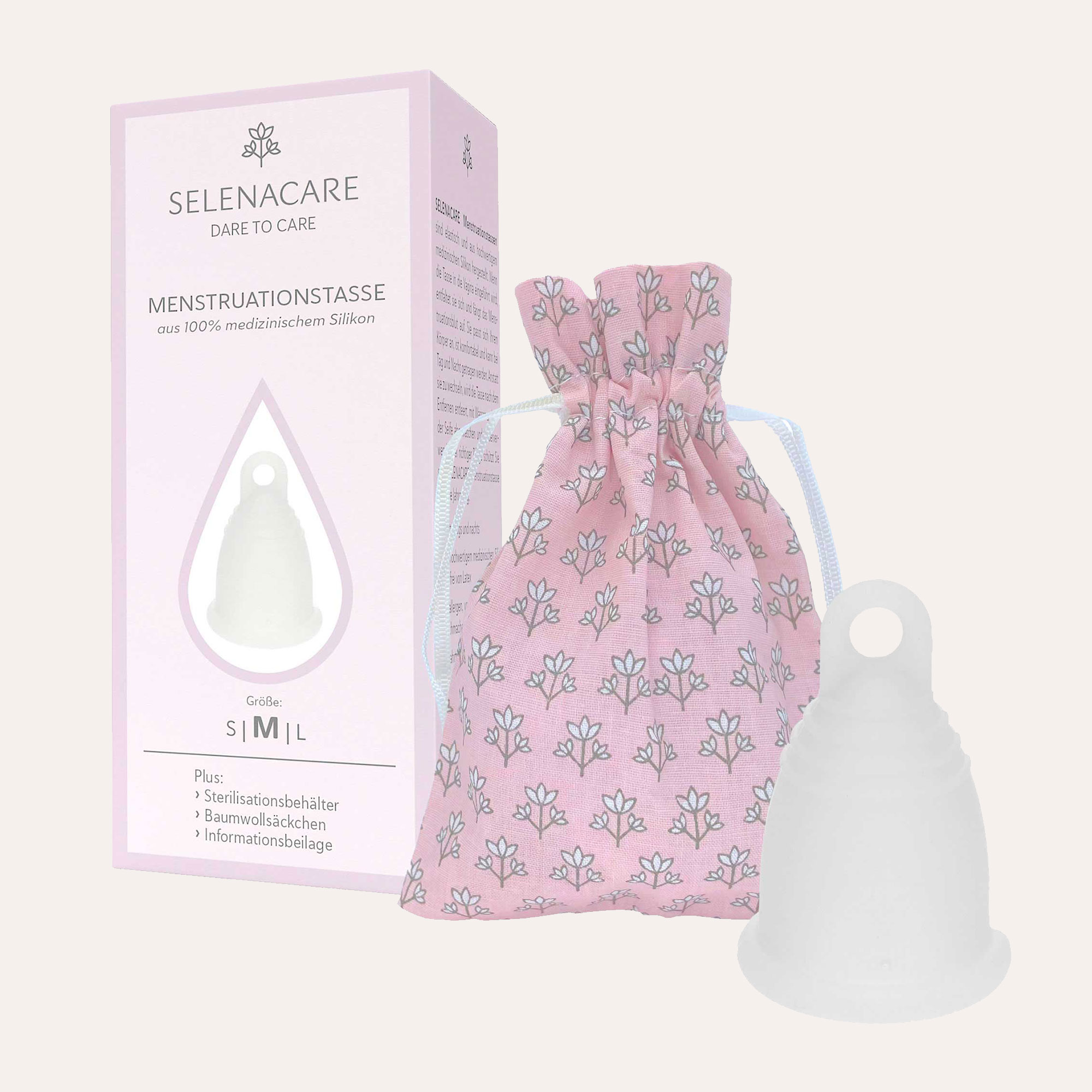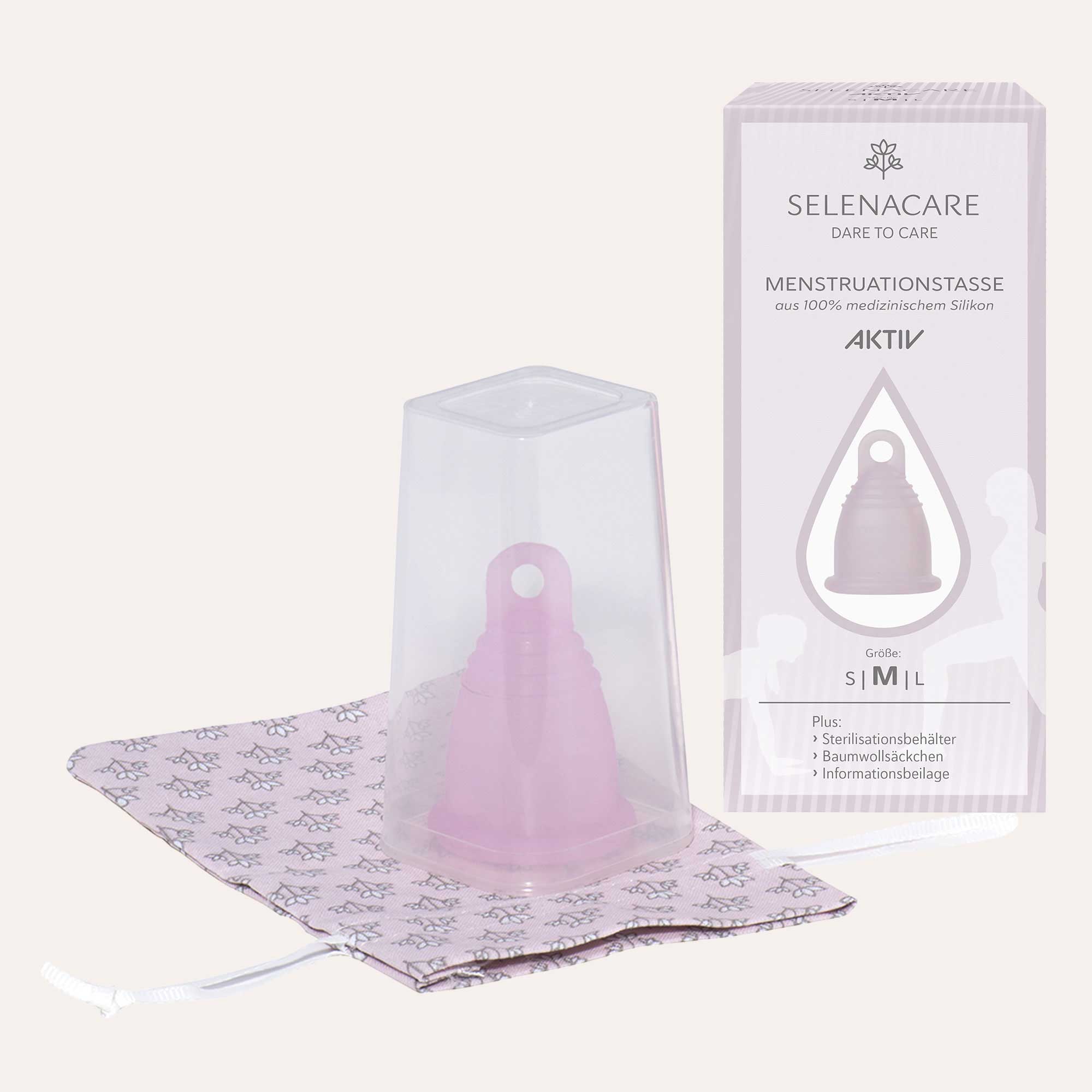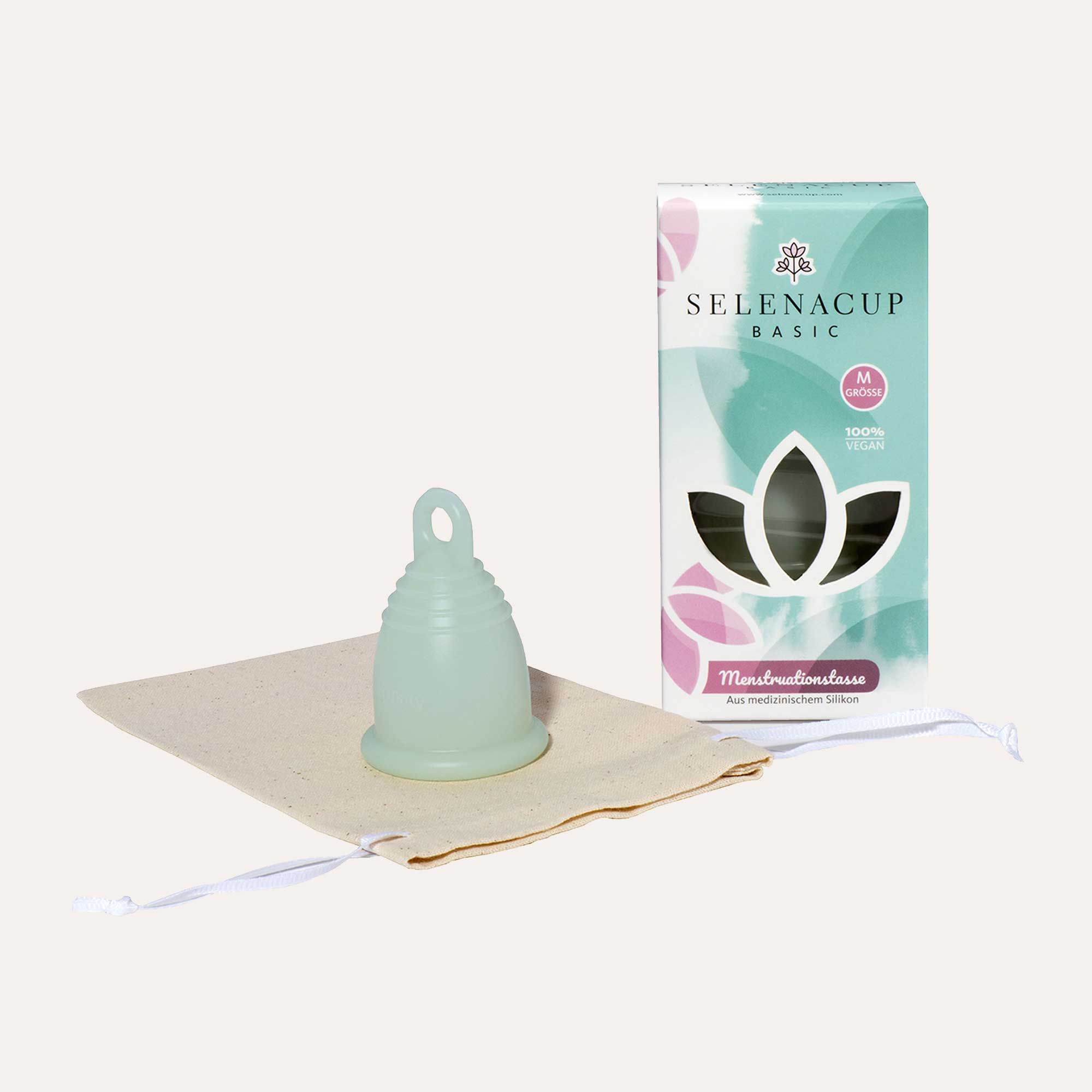Your menstrual cup from SELENACARE
Welcome to SELENACARE! Curious about using a menstrual cup? Let us tell you a bit about them… These versatile aids, also known as period cups, are an excellent, sustainable alternative to tampons and pads. Buying a menstrual cup means taking a step towards producing less waste and enjoying more comfort during your period. Read on to find out more!
Contents
What is a menstrual cup?How a menstrual cup works
Size and firmness – finding the right menstrual cup for you
Inserting and looking after your menstrual cup
Advantages of menstrual cups at a glance
No more waste! Invest in a menstrual cup for a cleaner future
WHAT IS A MENSTRUAL CUP?
Menstrual cups are a sustainable alternative to conventional, disposable period products. The little, conical cup made from medical-grade silicone collects the blood; you empty it into the toilet and then reinsert the cup. A menstrual cup can be used for many years, and does not constantly produce new waste.
HOW A MENSTRUAL CUP WORKS
If you’ve ever used tampons, using a menstrual cup will be relatively easy. The principle is both simple and ingenious: unlike tampons, menstrual cups sit lower in the vagina – approx. 1–2 cm above the vaginal opening is sufficient. Once in position, the folded menstrual cup opens up and creates a vacuum, which ensures that it is securely held in place. No leakage, no discomfort. When the menstrual cup is full, you simply empty it, rinse it and reinsert it – zero waste created!
SIZE AND FIRMNESS – FINDING THE RIGHT MENSTRUAL CUP FOR YOU
Choosing the right menstrual cup requires a little preparation. To determine the right size, it helps to measure height of your cervix during your period. You can do this yourself. Simply insert a finger (either the index finger or middle finger) into your vagina until you feel your cervix. With the other hand, mark the vaginal opening on the inserted finger. Now measure the length from the vaginal opening mark to the tip of your finger. It’s important that you measure while you are on your period as the cervix is often lower down at this time of the month. By the way: the height of your cervix can also change during your period, so it helps to repeat the measurements on different days.
And on top of this, the strength of your pelvic floor muscles also plays a decisive role when choosing the firmness of your menstrual cup. If your pelvic floor muscles are of normal strength or are slightly weaker, a softer cup (SELENACARE Premium) is ideal; if your pelvic floor muscles are stronger, we recommend a firmer cup (SELENACARE Active).
INSERTING AND LOOKING AFTER YOUR MENSTRUAL CUP
Inserting a menstrual cup is easy once you’ve had a little practice. By using various folding methods and a little water to moisten it, the menstrual cup is easy to insert. Unlike tampons, the cup doesn’t absorb the blood, instead it collects it – hence the name menstrual cup.
You should clean your menstrual cup before, during and after your period.
- Before your period: Clean with rubbing alcohol or sterilise it in boiling water for 5 minutes.
- During your period: Clean with water and mild liquid soap.
- After your period: Clean with mild liquid soap and then sterilise.
ADVANTAGES OF MENSTRUAL CUPS AT A GLANCE
- Sustainability. Menstrual cups are reusable and create less waste in comparison to tampons and pads, which make them a more environmentally friendly choice.
- Cost efficiency. Although the initial outlay may seem quite high, menstrual cups are more cost effective in the long term as they can be reused for many years.
- Long wearing time. Menstrual cups can be worn for up to 8 hours at once, depending of course on your personal flow.
- Comfort. Many users report that the cup is hardly noticeable once it’s been inserted. This makes for a very comfortable period.
- Large capacity. Menstrual cups can hold more blood than most tampons or pads, which makes them more practical for heavy bleeders.
- Less odour. As the blood in the menstrual cup does not come into contact with the air, odour is kept to a minimum.
- Health and safety. Menstrual cups contain no bleach, perfumes or other potentially harmful chemicals.
NO MORE WASTE! INVEST IN A MENSTRUAL CUP FOR A CLEANER FUTURE
By switching to a menstrual cup, you save money and also make an important contribution to protecting the environment. Menstrual cups create zero waste and can last for many years if properly cared for. Take the plunge and try our high-quality menstrual cups – for you, your body and the environment!








